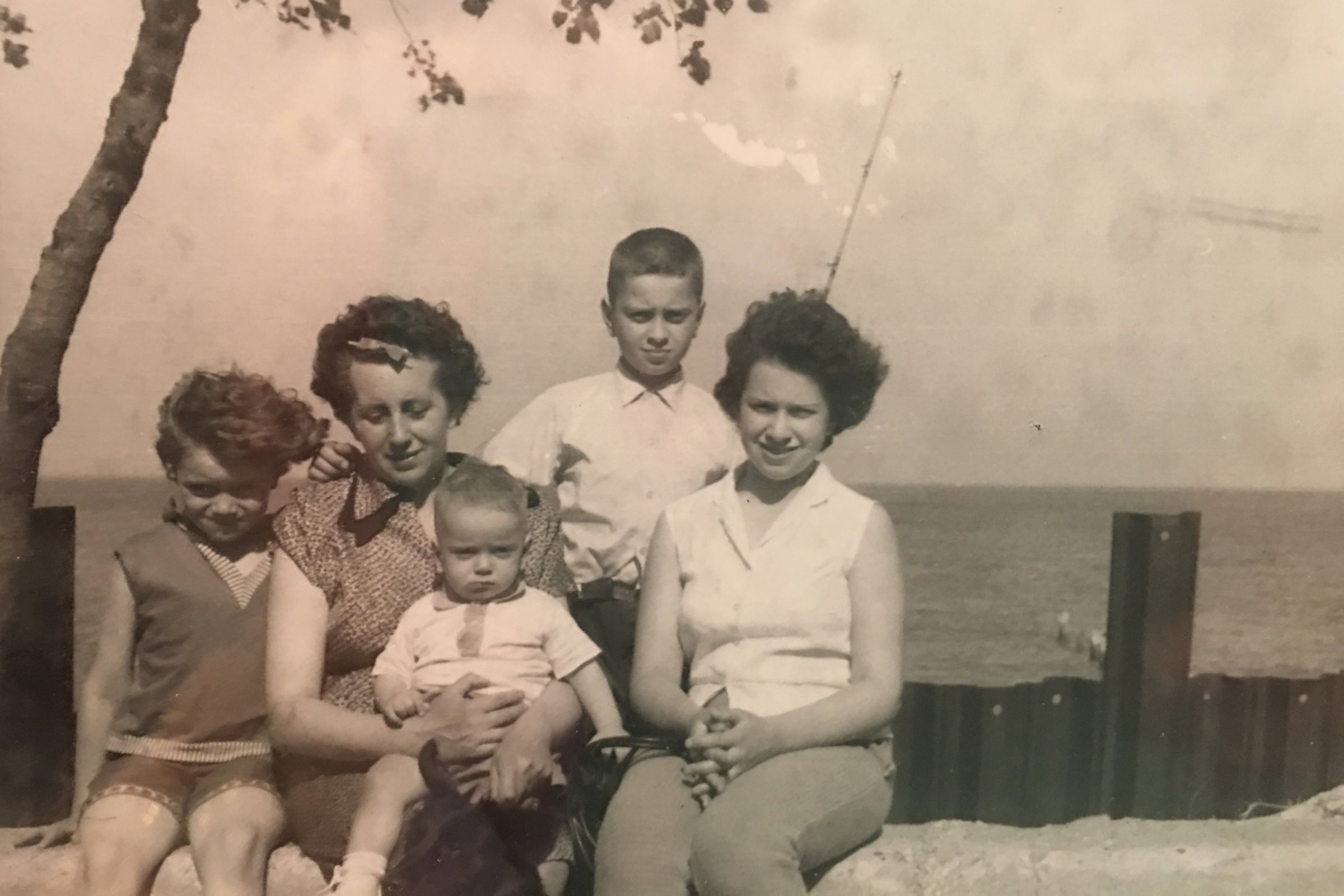
Sixty years on and half a world away, Judy Kepecz-Hays still remembers the fear. “We were walking through the forest towards the border. My mother told me not to make a sound,” she recalled. “There were cases where crying babies were accidently suffocated by parents trying not to alert the soldiers.”
It was early November 1956, soon after the short-lived Hungarian uprising had been brutally put down, and Kepecz-Hays was escaping Hungary with her parents, her 3-year-old brother and her 18-month-old sister. Kepecz-Hays was 6. “I remember asking my mother one day what the red liquid in the gutters was.”
The family slipped out of Budapest leaving almost all their belongings behind—anyone carrying suitcases would draw suspicion. She didn’t get to say goodbye to her grandparents, who none of them would ever see again. They took a train to a village near the town of Szombathely close to the Austrian border. From there they walked through the forest and over the border.
In Austria, they were taken to a large refugee camp where they stayed for three-and-a-half months. “People were very nice. They took us in and welcomed us,” Kepecz-Hays said. “The children in the camp would go to the local school each morning. We were made to feel very safe. Very welcome.”
Kepecz-Hays and her family were among the 200,000 refugees who fled the country in the months following the uprising which had begun on Oct. 23. Hundreds of thousands had taken to the streets to demand civil and political rights but by the next day Soviet tanks had rolled into the capital. In the weeks that followed, thousands died in clashes which pitted the poorly equipped “revolutionaries” against the might of the Red Army. Hundreds were summarily executed for participating in the uprising.
Austria, which received 90% of the refugees, was still recovering from the devastation of World War II. Like most European countries at the time, it was ill-prepared for the sudden influx, but despite the scale of the humanitarian crisis on its doorstep, Austria provided shelter, clothes and food for all who arrived. Children were given care and access to education.
As early as the first days of November 1956, pleas for assistance were sent to the U.N. and its members, in the spirit of the 1951 Refugee Convention. States joined forces, and over the next year, almost 40 countries came together to help care for the refugees who had arrived in Austria and Yugoslavia.
In Europe, most of the Hungarian refugees were resettled to the U.K., France, Germany, Sweden or Switzerland, where the vast majority were later granted citizenship. Others were resettled further afield to Australia, Canada or, like Kepecz-Hays and her family, to America.
The welcome that refugees from Hungary received 60 years ago contrasts starkly with the reception that refugees fleeing war and persecution in countries like Syria, South Sudan, Afghanistan and Iraq are given today.
Some of these refugees and asylum-seekers attempt to travel along the Balkan route to northern Europe but when they reach Hungary, increasingly tough laws and growing razor wire fences make this almost impossible. More than 6,000 people are stuck in Serbia in overcrowded centers or informal camps, waiting to enter Hungary. As winter approaches, more than 1,500 are sleeping rough in Belgrade and at the border, living in fear of what the future will bring.
Many asylum-seekers, including unaccompanied children, suffer violent abuse, illegal push-backs and unlawful detention at the hands of Hungary’s authorities and a system blatantly designed to deter them. The few who do get into Hungary face a harsh welcome: very few children can attend school, and men are often locked up in detention.
In a referendum earlier this month, an overwhelming number of people in Hungary voted to reject EU-wide relocation quotas. Even though the low turnout rendered the referendum invalid, the fact that it was held highlights the disturbing undercurrent of xenophobia directed at migrants and refugees in the country.
Whenever Hungary’s flagrant breaches of international law and shameful treatment of refugees and asylum-seekers are exposed, its Prime Minister Viktor Orbán extols them as an example for other countries to follow. Sadly, other European countries have indeed followed suit by focusing all efforts on keeping people out, instead of offering protection to those who need it the most. And by failing to address Hungary’s violations or condemn the hateful rhetoric preached by its leaders, European governments and the European Commission are not doing enough to alleviate the suffering of refugees and asylum-seekers.
The stubborn reluctance of European governments to acknowledge their political, if not historic, responsibility to provide protection to the refugees of today is a disgrace. In Europe, the crisis of today is a crisis of politics, that cannot be allowed to deflect attention from the practical solutions required to address the needs of refugees.
Sixty years after fleeing Hungary, Kepecz-Hays, now a realtor in Florida, is deeply moved when she sees images of refugees fleeing war or conflict. “It reminds me of my own experience and it is heart-breaking to watch. My parents didn’t know what was going to happen in Hungary. They just wanted a better life for their children. That remains the same. It doesn’t make a difference who you are or where you are from.”
More Must-Reads From TIME
- The 100 Most Influential People of 2024
- Coco Gauff Is Playing for Herself Now
- Scenes From Pro-Palestinian Encampments Across U.S. Universities
- 6 Compliments That Land Every Time
- If You're Dating Right Now , You're Brave: Column
- The AI That Could Heal a Divided Internet
- Fallout Is a Brilliant Model for the Future of Video Game Adaptations
- Want Weekly Recs on What to Watch, Read, and More? Sign Up for Worth Your Time
Contact us at letters@time.com